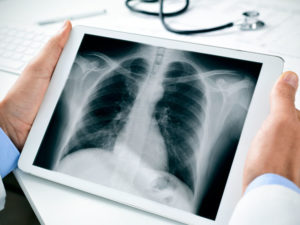For decades, ventilation-perfusion, alternatively called V/Q scanning used to be the most effective way to identify a critical problem like “Thromboembolic Pulmonary Hypertension”. However, recent studies have revealed that there could be another way to detect it. This new method bears the name DCR or “Dynamic Chest Radiology”.
The Recent Study
The researchers conducted a thorough comparison between the two methods to figure out the efficacy of both for diagnosing the aforesaid lung problem.
The study found that the new method, namely DCR, attained a specificity, sensitivity and accuracy fairly matching the traditional V/Q method outcomes for detecting CTEPH (chronic thromboembolic pulmonary hypertension).
This outcome encouraged the researchers to dig deeper and conclude in favor of DCR as a method of detaching CTEPH where V/Q scanning is not available. In short, the experts found DCR an adequate substitute for V/Q scanning.
When it comes to medical care techniques, alternatives are always a good thing. The authors published a detailed account of this paper in Radiology recently.

V/Q Scanning and Its Limitations
Earlier, V/Q scanning used to be the only way to determine whether a patient suffers from CTEPH or not. However, only a few academic medical facility centers were the sole places where such delicate and advanced-level diagnostic facilities were available.
This fairly restricted the smooth detection of this problem in many patients – especially those living in areas where no such centers were present. Another reason why V/Q scanning often fell short of the requirements was the availability of radioisotopes, technetium 99m and molybdenum 99.
Radioisotopes are hard to store and thus the centers struggled to keep them stacked for a long time which often impeded the process of diagnosis of CTEPH. Even when it was available, the patients had to go through an examination that exposed them to harmful ionizing radiation.
This is precisely why the author, Yuzo Yamasaki, who works at Kyushu University, emphasized having an alternative with higher flexibility and fewer potential side effects. Therefore, by all means, finding an alternative way of detecting the diseases can be referred to as a planned and intended development.
DCR- A Low Radiation Alternative
How DCR stands apart as a methodology could be a critical question here. DCR uses X-ray technology for detecting CTEPH. The entire functionality involves a pulsed x-ray generator, a flat-panel detector, and a special post-processing station.
In this method, the patients undergoing the diagnosis have to hold their breath for 7-10 seconds. During this time, DCR captures the images chronologically. This process does not need radionuclides or contrast media. Additionally, DCR curtails the dose of radiation substantially.
Outcomes Of the Study
The researchers observed the outcomes of DCR performed on a cohort of 50 patients of whom, 21 were free of CTEPH and the rest had it. The accuracy level of the detection done by DCR was 92%.
On the other hand, the level of specificity and sensitivity of DCR turned out to be a staggering 86% and 97% respectively. In the case of V/Q scanning, the accuracy levels used to be 94%.
The levels of specificity and sensitivity used to be around 86% and 100% respectively. Therefore, a simple comparison would suggest that V/Q scanning was a superior method. But a deeper analysis will show that DCR is equally effective given the reduced level of radiation used for the method.
The Researcher’s View
However, the authors did not conclude anything with certainty yet. They suggested further investigation and analysis of the matter conclude more specifically. Nonetheless, the team was pretty certain about DCR as an alternative for the prevalent V/Q scanning for detecting CTEPH while more research may continue.
At SepStream®, we understand the importance of efficient diagnostic facilities without causing multiple side effects. Therefore, we have kept our gamut full of AI-enabled, intuitive software solutions that can enhance the level of diagnostic efficiency substantially. Go through our collection of affordable and advanced solutions to choose the best ones for your clinic or imaging center.